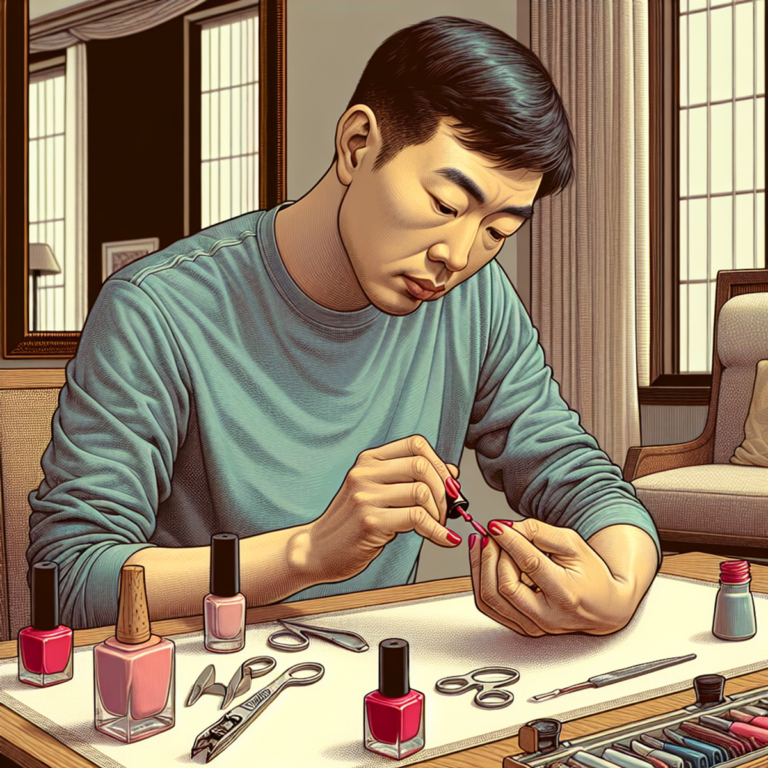Why Your Nails Are Peeling in Layers and How to Stop It From Happening

Introduction
Peeling nails are a common issue that many people face, impacting the appearance and confidence of individuals. Maintaining good nail health is crucial for overall well-being and self-esteem.
Peeling nails can be a source of frustration and embarrassment, affecting both men and women. The condition can make simple tasks like typing on a keyboard or buttoning a shirt uncomfortable, highlighting the importance of strong and healthy nails.
Investing in proper nail care is not just about looks; it’s also about nurturing your overall confidence and well-being. In the following sections, we will explore the various factors contributing to peeling nails, effective prevention methods, common mistakes to avoid in nail care routines, and recommendations for products that support nail health. Let’s dive into the world of nail care and discover how to combat the issue of peeling nails effectively.
Understanding Peeling Nails: Causes and Solutions
Peeling nails can be a frustrating problem, but there are ways to address it. In this section, we will explore the different factors that can contribute to peeling nails and discuss effective solutions.
Causes of Peeling Nails
Peeling nails can occur due to various reasons that affect the structure and strength of the nails. Some common causes include:
- Trauma to the Nail: Any kind of injury, such as hitting or forcefully bumping your nail against a hard surface, can damage the nail plate and lead to peeling.
- Picking Off Nail Polish: Removing nail polish by picking at it can weaken the top layer of the nail, making it more susceptible to peeling.
- Exposure to Chemicals: Regular contact with harsh chemicals like cleaning products or acetone-based nail polish removers can strip away the natural oils and moisture in your nails, causing them to peel.
- Wearing Acrylic Nails: While acrylic nails may enhance your nail appearance temporarily, they can weaken your natural nails over time if not applied or removed correctly. This weakening makes them more prone to peeling.
- Iron Deficiency: Mild iron deficiency can cause brittle and weak nails that are more likely to peel.
Solutions for Peeling Nails
Prevention and proper nail care practices can help minimize damage to the nail structure and prevent peeling. Here are some solutions you can try:
- Handle Your Nails with Care: Avoid using excessive force when performing tasks that may strain your nails, such as opening cans or prying objects open.
- Use Tools Instead of Your Nails: Use appropriate tools for activities like opening cans or packages instead of relying on your nails. This will help protect them from unnecessary pressure and potential damage.
- Maintain a Healthy Diet: Eat a balanced diet rich in nutrients that support nail health, such as biotin, vitamin E, and omega-3 fatty acids. These nutrients can strengthen the nails and prevent peeling.
- Stay Hydrated and Moisturize: Drink enough water throughout the day to stay hydrated, and regularly moisturize your nails with a nourishing oil or lotion to keep them hydrated and flexible.
- Protect Your Nails from Environmental Factors: Shield your nails from excessive moisture and high temperatures by wearing gloves during wet household chores or activities involving prolonged exposure to water or chemicals.
Excessive moisture, high temperatures, and other unfavorable conditions can significantly affect the health of your nails.
Tips for Protecting Your Nails:
- Limit Water Exposure: Excessive wetting and drying of hands can dehydrate the nails and make them more prone to peeling. Try to reduce your contact with water and always dry your hands thoroughly after washing.
- Moisturize Regularly: Apply a moisturizing lotion or oil to your nails and cuticles on a regular basis to keep them hydrated and prevent dryness that can lead to peeling.
- Wear Gloves for Protection: When participating in activities that may expose your nails to harsh chemicals or excessive moisture, such as washing dishes or gardening, wear protective gloves to minimize damage.
By implementing these solutions and taking the necessary precautions, you can reduce the risk of peeling nails and maintain healthier, stronger nails overall.
Remember: Seek medical advice if severe pain or bleeding accompanies peeling nails or if you experience changes in nail texture that are not improving despite preventive measures. Nutrient deficiencies, thyroid issues, fungal infections (onychomycosis), and hand eczema can also cause nail peeling, so it’s important to consult a healthcare professional for proper diagnosis and treatment if necessary.
Nail Care Routine for Peeling Nails: Do’s and Don’ts
Building an Effective Nail Care Routine for Peeling Nails
1. Hydration
One of the key steps in maintaining healthy and strong nails is to keep them hydrated. Dry nails are more prone to peeling, so make sure to moisturize your nails and cuticles regularly. You can use nourishing oils like jojoba or almond oil, or opt for specialized nail creams or lotions.
2. Protection
Protecting your nails from harsh chemicals, excessive moisture, and trauma is crucial in preventing peeling. When performing household chores involving water or cleaning agents, wear gloves to shield your nails. This will help minimize the contact between your nails and potentially damaging substances.
3. Gentle Maintenance
Taking care of your nails in a gentle manner is essential. Avoid excessive buffing, as it can weaken the nail plate and lead to peeling. Instead, use a soft buffer to smooth the surface of your nails when necessary. Additionally, refrain from using your nails as tools for opening cans or scraping off stickers, as this can cause damage and lead to peeling.
Common Nail Care Mistakes to Avoid
1. Excessive Buffing
While buffing can give your nails a polished look, overdoing it can thin out the nail plate and make it more susceptible to peeling. Limit buffing to once every few weeks and use a gentle buffer with fine grit.
2. Using Nails as Tools
It’s tempting to use your nails as tools for various tasks, but this can cause significant damage. Prying open lids or scraping off labels with your nails can weaken them and result in peeling. Always reach for appropriate tools instead.
3. Improper Nail Polish Application and Removal
Incorrect application and removal of nail polish can also contribute to nail peeling. Avoid scraping off polish bit by bit, as this can peel away layers of the nail along with the polish. Instead, use a gentle polish remover to dissolve the polish and remove it without causing damage. When applying nail polish, use thin coats and allow each layer to dry fully before applying the next.
The Role of Acrylic Nails in Peeling
Acrylic nails can be a stylish choice, but they can also weaken your natural nails over time. The adhesive used to apply acrylics and the filing process required for maintenance can cause damage and lead to peeling. If you’re a fan of acrylic nails, consider giving your natural nails a break between treatments to allow them to “breathe” and recover. Additionally, make sure that your nail technician follows proper application and removal techniques to minimize damage.
Remember, healthy and strong nails require proper care and attention. By incorporating these do’s and avoiding the don’ts in your nail care routine, you can prevent peeling and promote overall nail health.
Products to Support Nail Health
Incorporating Protective and Nourishing Products into Your Nail Care Routine
Wearing Gloves for Wet Work
When doing household chores or activities involving water, wear gloves to protect your nails from too much moisture. This can weaken your nails and cause them to peel.
Regular Nail Moisturization
Moisturize your nails regularly with suitable products to keep them hydrated and prevent brittleness. Look for moisturizers specifically made for nails, cuticles, or hands. Make it a habit to apply them after washing your hands or whenever your nails feel dry.
The Role of Nail Strengtheners and Conditioners
Nail strengtheners and conditioners can help reduce peeling by providing essential nutrients and strengthening the nail structure. These products often contain ingredients like keratin, vitamins, and minerals that promote nail health. However, it’s important to choose high-quality formulations that are proven to work without causing more damage.
Choosing the Right Nail Polish Remover
When choosing a nail polish remover, go for gentle formulas that can effectively remove polish without drying out your nails. Acetone-free removers are a popular choice as they tend to be less harsh while still being effective.
When to Seek Medical Advice
While most cases of peeling nails can be managed with proper care, it’s important to know when to seek medical advice as it may be a sign of an underlying health condition.
- If you experience severe pain, bleeding, or notice persistent changes in nail texture despite preventive measures
- It may indicate more serious issues such as nutrient deficiencies, thyroid problems, fungal infections (onychomycosis), or hand eczema.
In such situations, it’s advisable to seek medical advice for a proper diagnosis and appropriate treatment.
It’s important to implement these strategies for nail care and seek medical assistance if necessary. Taking proactive steps in maintaining nail health can lead to long-term improvements and boost confidence in your overall appearance.










